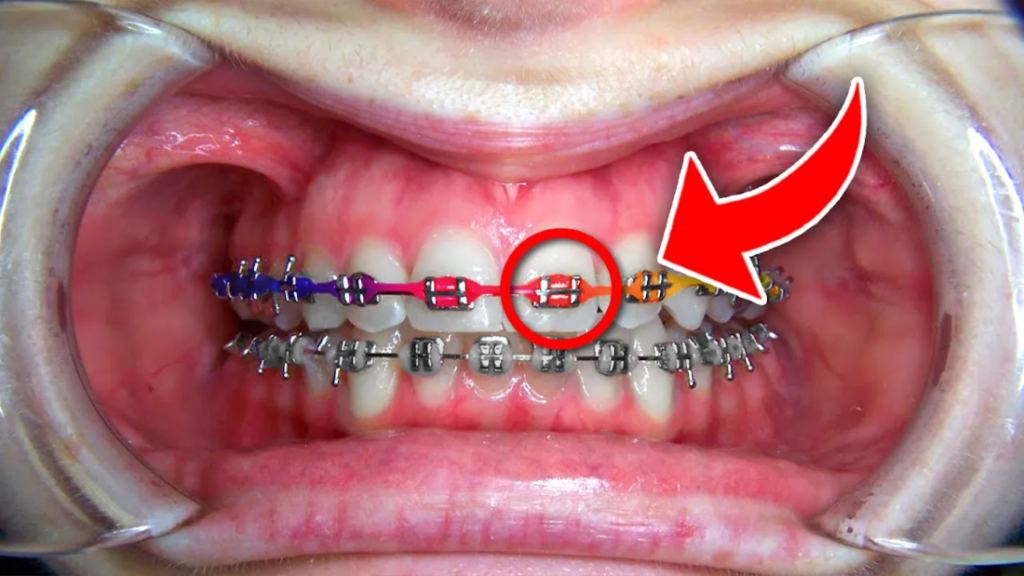
Are you considering braces to achieve that dazzling smile you've always dreamed of? At Packard Family Orthodontics, serving McKinney and Anna, Texas, we understand that the journey to a perfect smile involves understanding the tools and techniques used in orthodontic treatment. One such tool that plays a vital role in aligning teeth is the Power Chain. In this guide, we'll delve into the intricacies of the Power Chain, how it works, and why it's an essential component of your orthodontic journey.
Understanding Braces 101: What is a Power Chain?
Before we dive into the specifics of a Power Chain, let's have a quick refresher on braces. Braces consist of brackets bonded to teeth and wires that run through the brackets. These components work together to apply gentle pressure, gradually shifting teeth into their desired positions.
Now, imagine a thin elastic chain connecting the braces' brackets. This is where the Power Chain comes into play. A Power Chain is a stretchable elastic band that looks like a chain of small rubber rings. It is placed around the brackets to help close gaps between teeth and align them properly.
How Does the Power Chain Work?
The primary function of a Power Chain is to exert continuous pressure on the teeth, promoting movement in a specific direction. Here's how it works:
- Closing Gaps: If you have gaps between your teeth, the Power Chain is used to gradually close them. The elastic nature of the chain allows it to apply consistent pressure, bringing the teeth closer together over time.
- Aligning Teeth: In cases where teeth are misaligned or crooked, the Power Chain helps guide them into the desired position. By applying pressure to the brackets, the chain encourages the teeth to move in a coordinated manner, resulting in a straighter smile.
- Correcting Overbites or Underbites: Power Chains can also aid in correcting bite issues by guiding the teeth into proper alignment. Whether you have an overbite (upper teeth protruding over the lower teeth) or an underbite (lower teeth overlapping the upper teeth), the Power Chain assists in achieving a harmonious bite.
Power Chain vs. Traditional Braces: Understanding the Difference
When considering orthodontic treatment, you may come across various options, including traditional braces and alternatives like Invisalign®. Let's take a closer look at how Power Chain compares to traditional braces:
1. Appearance:
- Traditional Braces: Traditional braces consist of metal brackets and wires that are visible when you smile. While some patients embrace the classic look of traditional braces, others may feel self-conscious about their appearance.
- Power Chain: Power Chains are typically made of clear or tooth-colored elastic material, making them less noticeable compared to metal wires and brackets. This can be a more aesthetically pleasing option for individuals who are concerned about the appearance of their braces.
2. Treatment Time:
- Traditional Braces: Treatment time with traditional braces can vary depending on the severity of the orthodontic issues. On average, treatment with traditional braces may take anywhere from 18 months to 3 years.
- Power Chain: Power Chains are often used as part of traditional braces treatment to address specific issues such as closing gaps between teeth or aligning misaligned teeth. While the overall treatment time may not be significantly affected by the use of Power Chains alone, they can help expedite certain aspects of treatment, potentially reducing overall treatment time.
3. Comfort:
- Traditional Braces: Traditional braces may cause discomfort, particularly in the initial stages of treatment or after adjustments. The metal brackets and wires can sometimes irritate the cheeks, lips, and gums.
- Power Chain: Power Chains, being made of elastic material, tend to be more comfortable compared to metal wires and brackets. However, some patients may experience mild discomfort or soreness, especially after the placement of a new Power Chain or during adjustments.
4. Effectiveness:
- Traditional Braces: Traditional braces are highly effective in treating a wide range of orthodontic issues, including crooked teeth, gaps, and bite misalignments. They provide precise control over tooth movement and are suitable for complex cases.
- Power Chain: Power Chains are a supplementary component of traditional braces treatment, enhancing their effectiveness in specific areas such as closing gaps and aligning teeth. When used in conjunction with traditional braces, Power Chains can help achieve optimal results.
5. Maintenance:
- Traditional Braces: With traditional braces, proper maintenance is essential to ensure treatment progresses smoothly. Patients need to adhere to oral hygiene practices, including regular brushing, flossing, and attending scheduled appointments for adjustments.
- Power Chain: Similarly, patients with Power Chains need to maintain good oral hygiene habits to prevent plaque buildup and minimize the risk of tooth decay and gum disease. Regular visits to the orthodontist are necessary for adjustments and monitoring of progress.
The Bottom Line:
While traditional braces offer precise control over tooth movement and are effective for various orthodontic issues, Power Chains serve as supplementary tools, aiding in specific tasks like closing gaps and aligning teeth. Both options require proper maintenance and regular visits to the orthodontist to ensure successful treatment outcomes. Whether you opt for traditional braces or incorporate Power Chain into your treatment plan, our expert team is dedicated to helping you achieve a beautiful, healthy smile. Book your consultation with Dr. Packard here!




